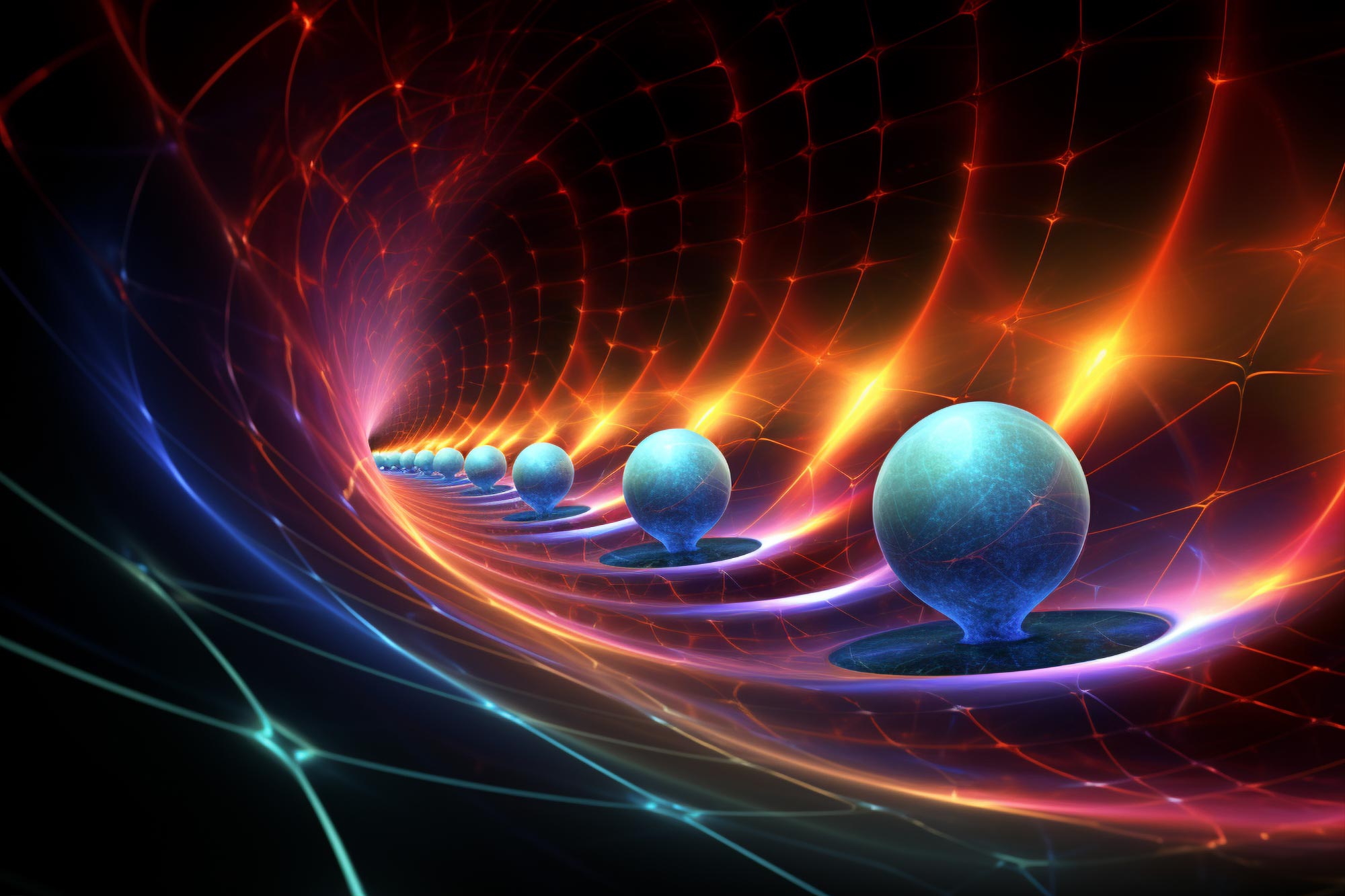
Naukowcy z niespotykaną dotąd dokładnością potwierdzili podstawowe założenie fizyki — że różne właściwości masy, takie jak ciężar, bezwładność i grawitacja, są zawsze równoważne, niezależnie od konkretnego składu masy. Wzmacnia to zasadę równoważności, niezbędną dla teorii względności Einsteina, i odnosi się do krytycznego punktu różnicy między fizyką klasyczną a fizyką kwantową.
Zespoły badawcze z Uniwersytetu Leibniza w Hanowerze i Uniwersytetu w Bremie potwierdzają kolejną zasadę równoważności.
Naukowcy wykorzystali półwieczne dane dotyczące odległości lasera księżycowego, aby potwierdzić ze 100 razy większą dokładnością, że wszystkie właściwości masowe są równe. Odkrycie to w dużym stopniu potwierdza zasadę równoważności Einsteina, która jest kamieniem węgielnym teorii względności.
Jednym z najbardziej podstawowych założeń fizyki fundamentalnej jest to, że różne właściwości masy — ciężar, bezwładność i grawitacja — zawsze pozostają takie same względem siebie. Bez tej równoważności teoria względności Einsteina byłaby sprzeczna, a obecne podręczniki fizyki musiałyby zostać napisane od nowa. Chociaż wszystkie dotychczasowe pomiary potwierdzają zasadę równoważności, teoria kwantowa zakłada, że musi nastąpić jej naruszenie. Ta rozbieżność między teorią grawitacji Einsteina a współczesną teorią kwantową jest powodem, dla którego szczególnie ważne są bardziej rygorystyczne testy zasady równoważności.
Zespół z Centrum Stosowanej Technologii Kosmicznej i Mikrograwitacji (ZARM) na Uniwersytecie w Bremie, we współpracy z Instytutem Geodezji (IfE) Uniwersytetu Leibniza w Hanowerze, z powodzeniem wykazał, że jest 100 razy większy.[{” attribute=””>accuracy that passive gravitational mass and active gravitational mass are always equivalent – regardless of the particular composition of the respective masses. The research was conducted within the framework of the Cluster of Excellence “QuantumFrontiers.” On July 13, the team published their findings as a highlights article in the scientific journal Physical Review Letters.

Binary system Earth-Moon. Credit: AEOS Medialab, ESA 2002
Physical context
Inertial mass resists acceleration. For example, it causes you to be pushed backward into your seat when the car starts. Passive gravitational mass reacts on gravity and results in our weight on Earth. Active gravitational mass refers to the force of gravitation exerted by an object, or more precisely, the size of its gravitational field. The equivalence of these properties is fundamental to general relativity. Therefore, both the equivalence of inertial and passive gravitational mass and the equivalence of passive and active gravitational mass are being tested with increasing precision.

First Author of the Publication, Vishwa Vijay Singh. Credit: Singh
What was the study about?
If we assume that passive and active gravitational mass are not equal – that their ratio depends on the material – then objects made of different materials with a different center of mass would accelerate themselves. Since the Moon consists of an aluminum shell and an iron core, with centers of mass offset against each other, the Moon should accelerate. This hypothetical change in speed could be measured with high precision, via “Lunar Laser Ranging.” This involves pointing lasers from Earth at reflectors on the Moon placed there by the Apollo missions and the Soviet Luna program. Since then, round trip travel times of laser beams are recorded. The research team analyzed “Lunar Laser Ranging” data collected over a period of 50 years, from 1970 to 2022, and investigated such mass difference effects. Since no effect was found, this means that the passive and active gravitational masses are equal to approximately 14 decimal places. This estimate is a hundred times more accurate than the best previous study, dating back to 1986.
Unique expertise
LUH’s Institute of Geodesy – one of only four centers worldwide analyzing laser distance measurements to the Moon – has unique expertise in assessing the data, particularly for testing general relativity. In the current study, the institute analyzed the Lunar Laser Ranging measurements, including error analysis and interpretation of the results.
Vishwa Vijay Singh, Jürgen Müller and Liliane Biskupek from the Institute of Geodesy at Leibniz University Hannover, as well as Eva Hackmann and Claus Lämmerzahl from the Center of Applied Space Technology and Microgravity (ZARM) at the University of Bremen published their findings in the journal Physical Review Letters, where the paper was highlighted in the category “editors’ suggestion.”
Reference: “Equivalence of Active and Passive Gravitational Mass Tested with Lunar Laser Ranging” by Vishwa Vijay Singh, Jürgen Müller, Liliane Biskupek, Eva Hackmann and Claus Lämmerzahl, 13 July 2023, Physical Review Letters.
DOI: 10.1103/PhysRevLett.131.021401

„Amatorski przedsiębiorca. Profesjonalny ekspert od internetu. Człowiek zombie. Nieuleczalny badacz popkultury”.
